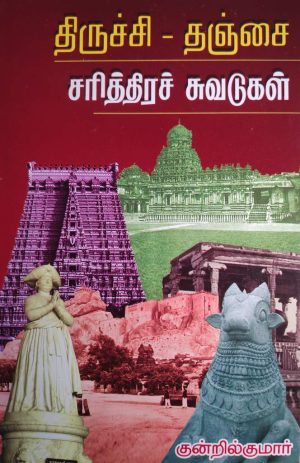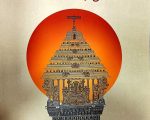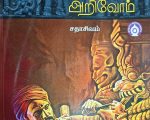Book Contents
1. Introduction
2. Trade with Sri Lanka
3. Trade with Southeast Asia
4. Trade with the West
5. Ports and Port Towns of India
6. Trade Goods and Technology
7. Trade Guilds and Trade Routes
8. Finale
Appendix
Harappan and its Maritime Trade with Mesopotamia and Beyond
Bibliography
The cultural integration takes place in a situation when mutually beneficial acts of commercial, biological and and economic sphere of the interacting societies. In an advantageous atmosphere, the integration is so rapid in a contiguous landmass but it is little slow in a land divided by vast water bodies like an ocean. When one witnesses a cultural integration or influence in a far off distance, then, the cultural interactions between the distant societies not only continues, but also very strong in commercial activities. India’s cultural influences in Sri Lanka and Southeast Asia could be seen in this perspective. There is another dimension to this factor. The society having a strong belief and pride in its cultural traditions, naturally it influences the lesser tradition. For instance, the Indian cultural influence is more visible in Sri Lanka and Southeast Asia than in the West irrespective of maritime interactions at equal foot with both the East and West.
The resilient human interaction and integration within the Indian Ocean space happened along the littoral states leading to the development of a shared culture. All the international call of ports have become a point of interaction for the merchants, religious men, mariners, artisans, technicians and the common people. Thus, trade is always considered as human intrusion and it acted as a principal agent of cultural change. The Indian Ocean is considered as one of the single most arenas of transoceanic commercial and cultural interaction.
The hybrid nature of the material evidence suggests that this transoceanic interaction might have initiated in the mid- millennium BCE popularly called Early Historic India. Other than Harappan ports, the remaining ports of India are mostly came Churning the Ocean into existence in Early Historic period or little earlier. D Early Historic period, the ports of entire coast of India b operational and the Indian Ocean rim countries have become true global community. In that way, the Early Historic is one of the crucial and critical times of Indian maritime history perva Understanding the cultural transformation from Iron Age Early Historic in India is one of the challenging tasks in the f of archaeology. The littoral states of Gujarat, Maharashtra, Karnataka, Kerala, Tamil Nadu, Andhra Pradesh, Orissa and Wes Bengal witnessed diverse cultural practices in the course of cultural makeover. The varied geographical settings observed in the entire coastal landscape facilitated the creation of a series of pos with good anchorage particularly at the mouth of major rivers. The conversion from a fishing harbour to a major port was achieved by economic developments supported with political processes. Ea political establishment had an inland capital and a port on the coastal zone of their territory. Beyond initial demographic expansion and subsequent migration, trade played a dominant role in carrying cultural traits to new areas of attraction beyond Indian waters.
It is generally believed that the political stabilization in a clas based society, economic development through exploitation of natural resources, the emergence of new philosophy of life through the spread of religion particularly Jainism and Buddhism and the expansion of both inland and external trade led to the emergence of Early Historic period. However, the emergence of Early Historic period is not uniform throughout south India and it is still a matter of debate. Historians, linguists, epigraphists, numismatists and archaeologists are trying to draw their conclusion based on the dat retrieved from various and varied primary sources. Scholars have attempted to arrive at conclusions based on diverse and complex primary sources like inscriptions, coins, literature and archaeological evidences. Initially, the occurrence of written evidences in Brahm script was considered as the beginning of Early Historic period the availability of Asokan edicts throughout India datable to third century BCE is considered by some as the beginning of Early Historic south India. The radiometric dates obtained for the archaeological context of the Brahmi script from Anuradhapura, Tissamaharama and Kantarodai in Sri Lanka, Kodumanal and Porunthal in Tamil Nadu pushed the date of Brahmi script to sixth century BCE (Deraniyagala 1990:149-168; Coningham, et.al., 1996:73-97; Rajan and Yatheeskumar 2013:279-295; 2015:399-416). But, emphasising a particular class of evidence, namely, Brahmi inscriptions, leaving the other social parameters like the usage of coins, formation of trade routes, settlement dimensions, formulation of various clan groups and the emergence of state has not helped to arrive at a better understanding.
Among the archaeologists and historians, the usage of the term Early Historic is not uniform and on several occasions it has been used loosely and substituted with the terms like Mauryan culture, Sunga culture, Satavahana culture, Andhra culture, etc., with political affiliation rather than the social process-oriented classification. In a few cases, the occurrence of Brahmi inscribed potsherds, potsherds like russet coated ware (RCW), northern black polished ware (NBP), rouletted ware (RW), red polished ware (RPW), knobbed ware and coins like punch-marked coins (PMC) suffices to designate the culture as Early Historic. For some, the appearance of great personalities like Mahavira and Buddha is sufficient to designate the culture as Early Historic (Dhavalikar 2002). In Tamil Nadu, all the Sangam Age sites are designated as Early Historic. These ideas suggest that there is hardly any consensus among the archaeologists and historians (Chattopadhyaya 2008:3-14). Irrespective of these lacunae, the evidences embedded in epigraphical, numismatic, literary and archaeological records like bronze objects, horse bones, carnelian and agate beads in Iron Age context prior to the traces of NBP, Brahmi script and Punch Marked coins suggest that south India was involved in long distance inland trade well before the so called Mauryan incursion in Deccan, Andhra Pradesh and Karnataka and also point to the emergence or formation of a new Churning the Ocean social order henceforth unnoticed in the previous Iron Age culture (Prasad 1994:22-25; Sarma 1985:15-16; Sarma and Varaprasada Rao 1993:3-25; Thapar 2008:249-262). Thus, there is a convergence of views among the scholars of different disciplines that the Early Historic period both in the North and South could go back to sixth century BCE and the terminal phase falls somewhere around fifth century CE. Thus, the Early Historic maritime trade denotes the activities of the period that falls between circa sixth century BCE and circa fifth century CE. In political terms, it belongs to the pre- Gupta period in the north and pre-Pallava or pre-Chalukya period in the south.
The epigraphical, numismatic, literary and archaeological sources provide considerable amount of information on the nature of political, economic and commercial contacts with different regions of the contemporary world during Early Historic times, through both the land and maritime routes. The commercial contacts with the West were well-established in 3rd millennium BCE during Harappan times (see Appendix). The migrated people speaking different languages with various cultural traits from the West during the prehistoric ages was non-commercial in nature whereas the Harappan contacts with Mesopotamia were more of commercial in nature. Since the Harappan times, the commercial contacts with the West continued in varied degrees of impacts.
Both in terms of time and space, the commercial contact with the West and East were more dominant during the Early Historic times as attested by the evidence. The exchanges of Embassies between India and the West are known from Mauryan times as Ptolemy-ll received one such embassy (Hourani 1995; Thapar 1997:11-40). Such exchanges, showing diplomatic contacts, rather than Imperial control, were continued until seventh century CE with Rome, South Arabia and East Africa (Sidebotham 1996:287-308; Tomber 2008:152). The diplomatic goodwill exchanges between the states suggest their interest in maintaining mutual trade benefits.
The references on foreign rulers such as Antiochus II Theos (Amtiyaka) of Syria, Ptolemy II Philadelphos (Pulamaya) of Egypt. Antigonus II Gonatas (Amtekina) of Macedon Magas (Maka) of Cyrene and Alexander II (Alikyasadala) of Epirus in Asokan Major Rock Edict XIII were made as part of reciprocal relationship. Several individual traders, both big and small, might have involved in the act of trade (Fig. 1.1). For instance, Tchernia, based on epigraphical evidences from Eastern desert of Egypt and a stamped amphorae from Mathura, identifies that Peticius family of Italy and Annii family of Puteoli were involved in supplying wine to India (Tchernia 1997:238-249; 1997a:250-276). The imposition of tax by the state, documents like Muziris papyrus and the material evidence indicate the involvement of private entrepreneurship in the trade activities. Besides the private individuals, a merchant guild or consortia like trade organisation involving wealthy merchants might have operated in the transoceanic trade.
The Muziris papyrus implies that the affluent traders engaged small traders to carry out their business by financing them (Rathbone 2001:39-50). The literary and inscriptional references about the foreign settlers at Barygaza, Muziris and Kaveripattinam reveal that merchants, not only from the Roman world but also from Arab world, Sri Lanka and Southeast Asia made their physical presence at these ports (Fig. 1.2). Though, we have not come across any direct references in other ports, the possibility of the settlement of foreign traders is not remote, when we assess the quantity of material evidence. The names like körpümän, kanan and catan (most likely they were merchants as the term catan indicates) found at Quseir al-Qadim and Berenike indicate the presence of Indian traders in Egypt. The presence of Indian sail and timber in Egypt and the term like yavana tatchar (Yavana carpenter) found in India indicate that technically skilled people like sailors and carpenters might have also travelled and stayed along with merchants. The special mention of carpenters among the other artisans suggests that the skilled carpenters involved in repairing ships of their respective countries and were more in demand both in Red Sea and Indian Ocean ports. This led to the transfer of technology and also cultural diffusion through the movement of mariners, skilled workers and traders. The imitation of Roman artefacts like intaglio, lamp and amphorae are the reflections of such cultural and technological diffusion.
Thus, the analysis of location of ports, coastal geomorphology, the import and export items, the evidence related to languages and scripts, inland trade routes, maritime routes, traders and trade guilds, monsoon patterns, transfer of technologies, political conditions and other such maritime related aspects would help us to understand the multi-dimensional nature of the Indian Oceanic trade that happened during the Early Historic period.
Churning the Ocean – Maritime Trade of Early Historic Peninsular India –
Author: Dr. K. Rajan
Pages: 328























